Virtual Reality in K-12 Classrooms with Nearpod
Nearpod is an educational platform designed to enrich classroom learning through interactive lessons and presentations. It empowers educators to create engaging content incorporating multimedia, interactive activities, quizzes, polls, and even virtual reality experiences. With Nearpod, teachers can deliver these lessons directly to students’ devices, fostering real-time engagement and feedback. Additionally, Nearpod offers features for teachers to track student progress and assess comprehension, ultimately aiming to elevate classroom participation and active learning.
Nearpod offers a wide variety of pre-made lesson plans spanning different subjects and grade levels. Educators can also create their own customized lesson plans using Nearpod’s templates and tools. From history to science to language arts, Nearpod provides comprehensive resources to support engaging and effective teaching.
Some Nearpod lessons encourage global collaboration by incorporating virtual field trips to destinations worldwide, collaborative projects involving students from different regions, cultural exchange activities, discussions on global issues, and language learning opportunities. Through these activities, Nearpod fosters cross-cultural communication, teamwork, and empathy among students from diverse backgrounds.
Example Lesson: https://nearpod.com/t/social-studies/kindergarten/asian-american-pacific-islander-heritage-month-k2-L133828595
The lesson I attached is a K-2 grade level lesson plan about Asian-American and Pacific Islander Heritage Month. Asian American Heritage Month is celebrated annually in May to honor the contributions and achievements of Asian Americans and Pacific Islanders in the United States. This lesson includes embedded activities such as drag and drop, collaborate board, matching pairs, open ended questions and a quiz. With these tools, students will learn about cultural heritage.

This is a screenshot I took of the lesson plan from their website.
Website link: https://nearpod.com/

Nearpod allows users to chose the grade level you want to teach and gives you over one-thousand lessons to chose from!
WE Teachers Mental Well Being in the Classroom
There is certainly a heightened focus on mental well-being in schools today than there used to be. When I was in school grades K-8 mental health issues among students were not acknowledged the way they are now. Today, we know much more about their impact on academic performance. Recognizing its crucial role in student success and overall quality of life, schools are increasingly integrating mental well-being into their curriculum and support systems. In my future classroom, this is an area I really want to continue to put an emphasis on. I want to give my future students the support I wish I had as a child in school.


Understanding and building knowledge about mental health issues in youth is crucial for several reasons. Most mental health problems often emerge during adolescence, and early intervention can prevent long-term consequences. It is important for all people to know that mental health affects various aspects of a young person’s life, including academic performance, relationships, and overall well-being. By increasing awareness and knowledge, we can reduce stigma, promote help-seeking behaviors, and provide appropriate support and resources to those in need. Understanding and addressing mental health in youth fosters resilience and equips them with coping skills to navigate life’s challenges effectively.

Section two in this unit discusses common mental health challenges amongst students. Some common mental health challenges in youth include anxiety disorders, depression, ADHD, eating disorders, substance abuse, self-harm, suicidal behavior, and mood disorders like bipolar disorder. These issues can significantly impact a young person’s emotional well-being, academic performance, and social relationships. Early recognition and intervention are crucial to prevent long-term consequences and promote healthy development. By addressing these challenges through education, awareness, and access to mental health resources, we can better support the needs of youth and foster resilience, ultimately ensuring their overall well-being and future success.

Supporting children struggling with mental health in the classroom involves creating a safe, supportive environment where emotional regulation is promoted through coping strategies and regular brain breaks. Providing individualized support, encouraging peer empathy, and normalizing mental health discussions are essential. Implementing sensory supports, establishing predictable routines, and collaborating with mental health professionals further bolster student well-being. By modeling healthy coping behaviors and prioritizing student support, educators foster an environment where all students can thrive academically and emotionally.

The last section of this unit covers the importance of a teacher’s mental well-being. It’s vital for teachers to be in a good mental state as it directly impacts their effectiveness in the classroom and their ability to support students. To maintain their mental well-being, teachers can prioritize self-care through activities like exercise and hobbies, establish clear boundaries between work and personal life, and seek support from colleagues and loved ones. Engaging in mindfulness practices, attending to emotional needs, and taking regular breaks also contribute to their overall well-being. By prioritizing their mental health, teachers can create a positive learning environment and serve as positive role models for their students.
Top 7 Accessibility Tools
Today, I am here to tell you 7 of my favorite accessibility tools that I believe to be very beneficial for students of all ages who have specific accessibility needs.
Tool #1: Microsoft Teams Reading Coach
Microsoft Teams Reading Coach is valuable for both students and educators due to its ability to provide personalized reading exercises, interactive learning activities, immediate feedback, and progress tracking. It even offers accessibility features such as text-to-speech functionality, ensuring inclusivity for all learners. By tailoring reading experiences to individual needs and leveraging technology for engaging activities, Reading Coach enhances comprehension, retention, and overall reading proficiency in students.

Image link: https://i.ytimg.com/vi/M0uV68tWfpc/maxresdefault.jpg
Tool #2: Kurzweil
Kurzweil provides a comprehensive set of tools specifically designed to support students who struggle with literacy. With features catering to reading, writing, and study skills, the program aims to foster independence and active engagement in education. Kurzweil offers text-to-speech features, aiding students with disabilities or preferring auditory learning. With this tool students are also capable of highlighting and note-taking and its customizable settings accommodate individual preferences. Its accessibility and versatility make it a valuable resource for learners of all backgrounds and abilities, enhancing comprehension and engagement across various educational materials.
Tool #3: Dragon Naturally Speaking
Dragon Naturally Speaking significantly enhances students’ learning experience by providing accessibility for those with physical disabilities, boosting productivity through efficient dictation capabilities, aiding writing with support for spelling and grammar, accommodating diverse learning modalities, and fostering independence in academic tasks. By accommodating diverse learning modalities, such as verbal expression, Dragon NaturallySpeaking caters to individual student needs, promoting a more personalized and engaging learning experience.

Image link: https://equalentry.com/wp-content/uploads/2017/06/image.png
Tool #4: Read&Write
The Read&Write tool is a valuable resource for students, offering a wide range of benefits to support their individual academic experiences. With text-to-speech functionality, it assists in reading comprehension, particularly for students with learning difficulties. Additionally, its writing support features, such as word prediction and spell check, help students improve their writing skills and produce higher-quality work. Read&Write also aids in studying by providing highlighting and note-taking tools, while its accessibility features ensure that all students can access digital content effectively. Furthermore, with support for multiple languages and translation tools, it caters to diverse student needs, making it an indispensable tool for promoting academic success and inclusivity.
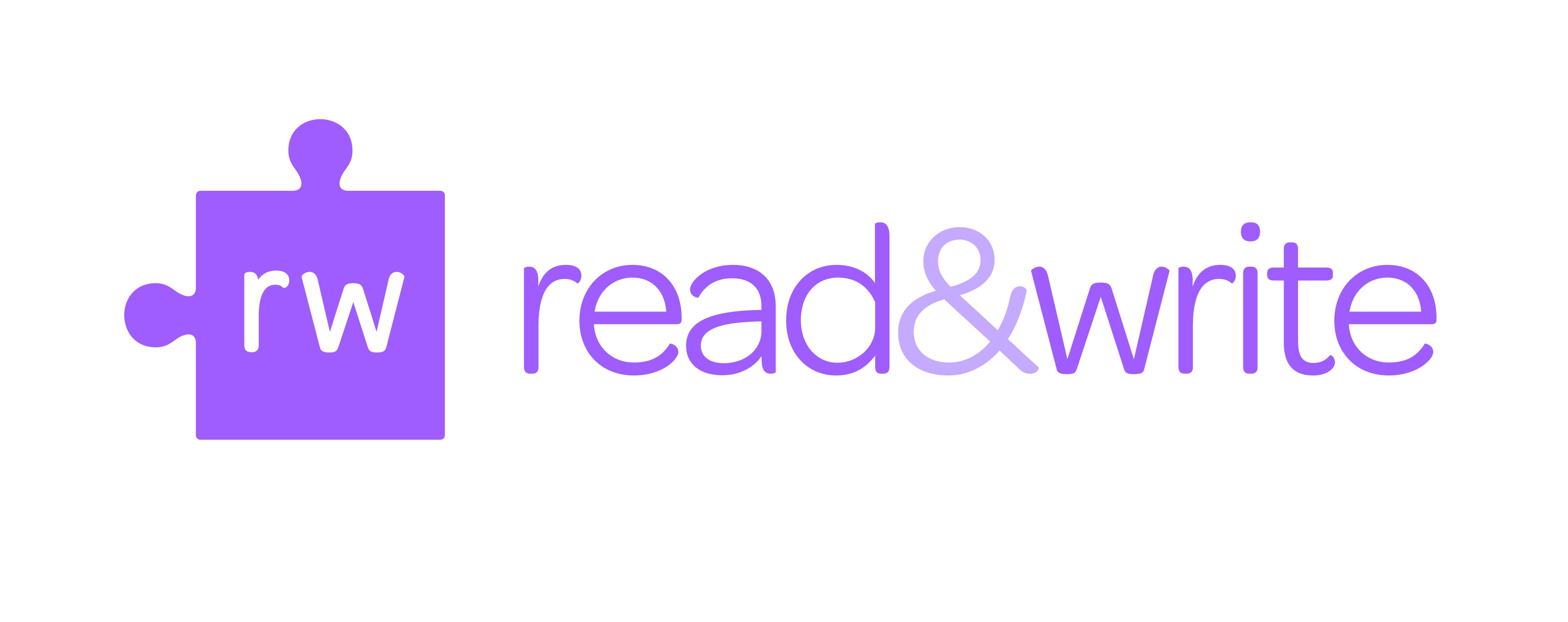
Image link: https://studentaffairs.fresnostate.edu/lrc/images/RW-RGB.jpg
Tool #5: Sonocent
Sonocent is a powerful tool designed to revolutionize note-taking and learning for students. By allowing users to record lectures and presentations, it promotes active listening and reduces the need for extensive note-taking during class. Its structured approach to organizing recorded content enhances comprehension and retention, benefiting students of all abilities. Sonocent’s accessibility features make it especially valuable for students with disabilities, while its review and revision capabilities aid in reinforcing learning. The platform also facilitates collaboration by enabling students to share notes and recordings with peers, creating a dynamic and engaging learning environment.

Image link: https://www.sonocent.com/static/company-logo-b35c88032b9cde567c56b64c2ed036ed.png
Tool #6: OneNote Accessibility Features
OneNote offers unique accessibility features to accommodate diverse user needs. These include extensive keyboard shortcuts for efficient navigation and editing, screen reader compatibility for visually impaired users, and an Accessibility Checker to identify and address potential issues. The Immersive Reader feature provides a distraction-free reading experience with text-to-speech functionality and customizable text settings. There are also dictation tools to facilitate note-taking for individuals with mobility impairments or those who prefer verbal communication. With inking and drawing tools, cross-platform compatibility, and a commitment to inclusivity, OneNote ensures that all users can effectively create, organize, and interact with their notes, enhancing accessibility and usability across various devices and operating systems.
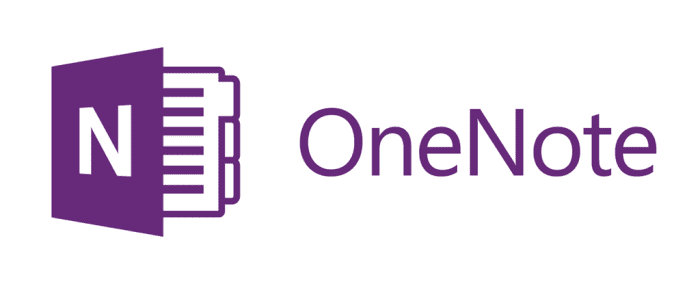
Tool #7: JAWS
JAWS, short for Job Access With Speech, is a special software that helps people who have trouble seeing use computers. In schools, it’s super helpful for students with vision problems. JAWS reads out loud what’s on the computer screen in a clear voice or turns it into Braille. This means students can listen to their lessons, read digital books, and do their homework online just like everyone else. It works with lots of different programs and files, making it easy for students to keep up with their schoolwork and be independent learners. With JAWS, students with vision challenges can do well in school and be part of classroom activities just like their classmates.
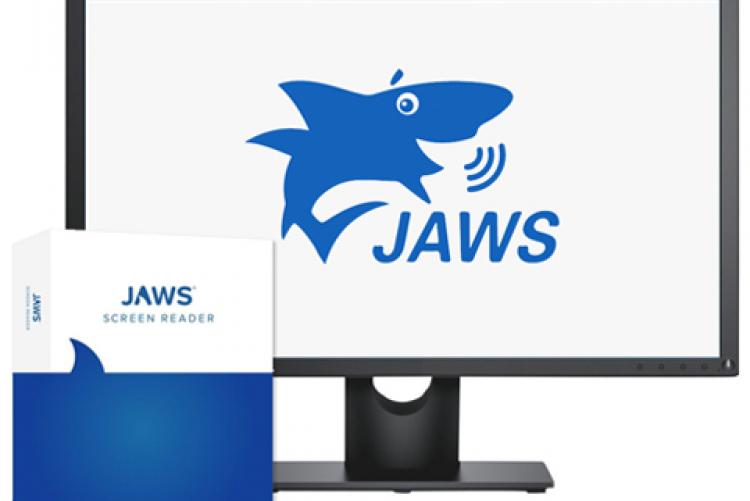
HyperDocs / Whole – Class Google Doc
Have you ever heard of a HyperDoc? If not, no worries because I am going to tell you about them and how they can transform learning!
A HyperDoc is a digital document that can incorporate various multimedia elements, such as text, images, links, videos, and interactive features, to facilitate learning and engagement. HyperDocs are often used in education as instructional materials or lesson plans to organize content in a structured and interactive format. HyperDocs are designed to promote active learning, student-centered instruction, and personalized learning experiences. They provide students with access to various resources, opportunities for exploration and inquiry, and avenues for demonstrating understanding. Teachers can use hyperDocs to deliver content, guide students through learning activities, and assess learning outcomes. They are typically created using tools like Google Docs, Google Slides, or other online platforms that allow for collaboration and multimedia integration.
For example, a whole class Google Doc HyperDoc offers several benefits for both teachers and students. The first one being collaboration. With a whole class Google Doc HyperDoc, all students can access and work on the same document simultaneously. This promotes collaboration and allows for real-time interaction among students as they engage with the content. The second benefit is accessibility. Since the HyperDoc is hosted on Google Docs, it can be easily accessed from any device with an internet connection. This ensures that students can engage with the materials both in and out of the classroom, promoting accessibility and flexibility. Another benefit in using a whole-class Google Doc is customization. Teachers can easily customize the HyperDoc to meet the specific needs and learning objectives of their class. They can add or remove content, embed multimedia elements, and tailor activities to accommodate different learning styles and abilities. A whole class Google Doc HyperDoc can incorporate various learning pathways or levels of difficulty to cater to the diverse needs of students. Teachers can embed links to additional resources, provide alternative assignments, or offer extension activities to support differentiation and personalized learning. This technique also encourages organization. HyperDocs provide a structured format for organizing instructional materials, resources, and activities in a single document. This helps students navigate through the content more efficiently and stay focused on the learning objectives. Student engagement will increase with HyperDocs as well. By incorporating multimedia elements such as images, videos, and interactive features can enhance student engagement and motivation. Whole-class Google Docs can also include opportunities for student interaction, discussion, and reflection, fostering a more dynamic and interactive learning experience. Teachers can easily monitor student progress and provide timely feedback by reviewing student contributions and interactions within the HyperDoc. It can also include built-in assessment tools such as quizzes, polls, or reflection prompts to gauge student understanding and track learning outcomes.
Overall, a whole-class Google Doc HyperDoc offers a flexible, collaborative, and interactive approach to instruction that can enhance student engagement, promote active learning, and support differentiated instruction.
Watch the short video below to learn how to create and share a Google Doc with a group in order to work simultaneously!

Van Gogh Museum
Would you believe me if I told you I was at the famous Van Gogh Museum in Amsterdam, Netherlands, just two minuets before walking into my class at Stockton University? Probably not, however, I am going to tell you how you can make that possible.
Vincent Van Gogh was a Dutch painter who is among the most famous and influential figures in the History of Western Art. The Van Gogh Museum provides free, virtual tours for people from all over the world to explore his notorious artwork. Not only can you view the Van Gogh’s beautiful creations in this tour, but you can navigate all four floors of the virtual building with a 360 view. Under each piece there is a full description about the artwork.
Before this invention, visiting the Van Gough Museum has typically been a once in a lifetime bucket-list experience. Now, with this virtual tour we can visit whenever and wherever we please. For me, exploring the museum virtually is a great way for me to wind down after a long day. I enjoy observing the art and reading each description to ease my mind.

As you can see above, you have the option to choose which floor you would like to explore by clicking on one of them.
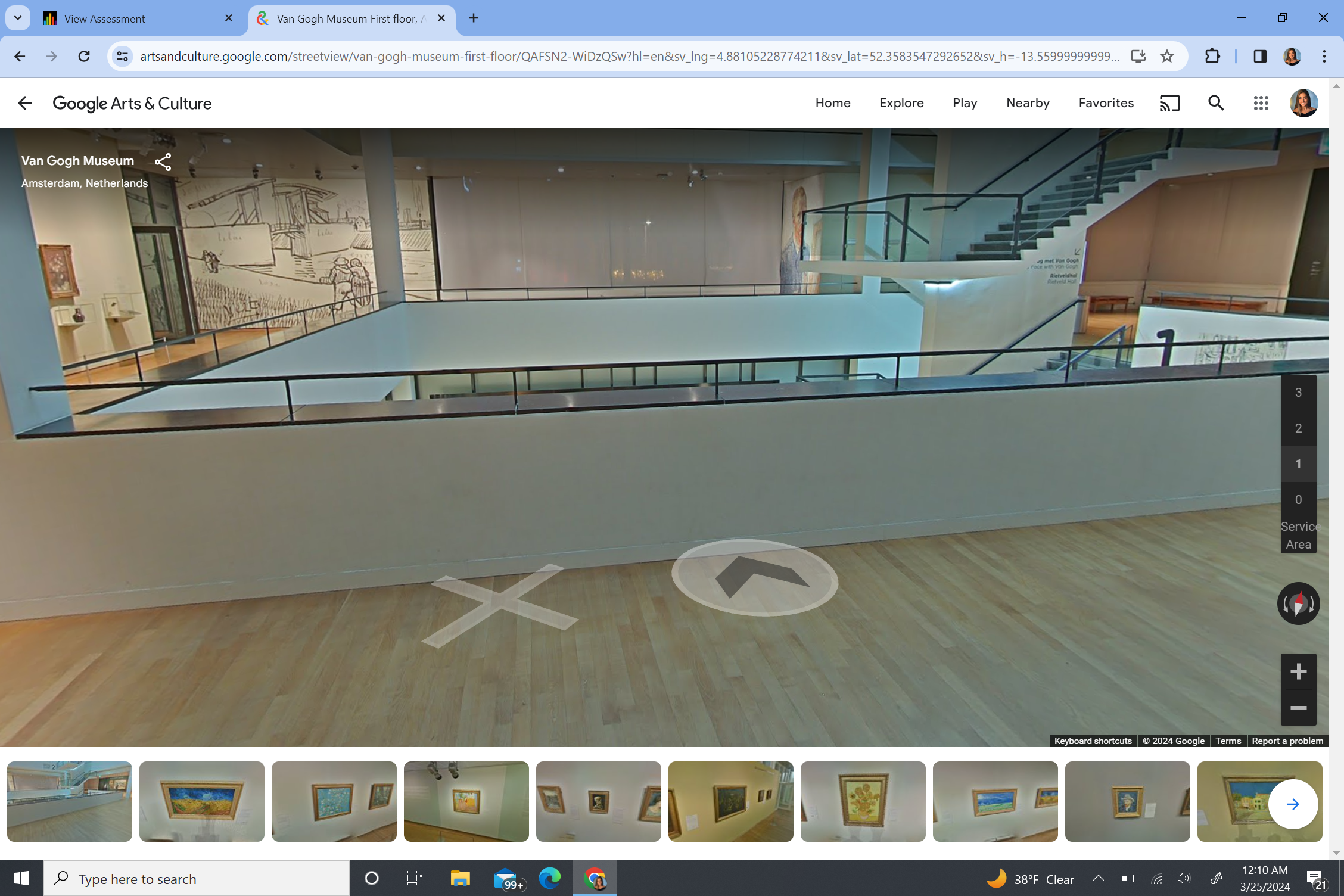
Tourists can navigate the building using their mouse or keyboard buttons to explore the artwork.
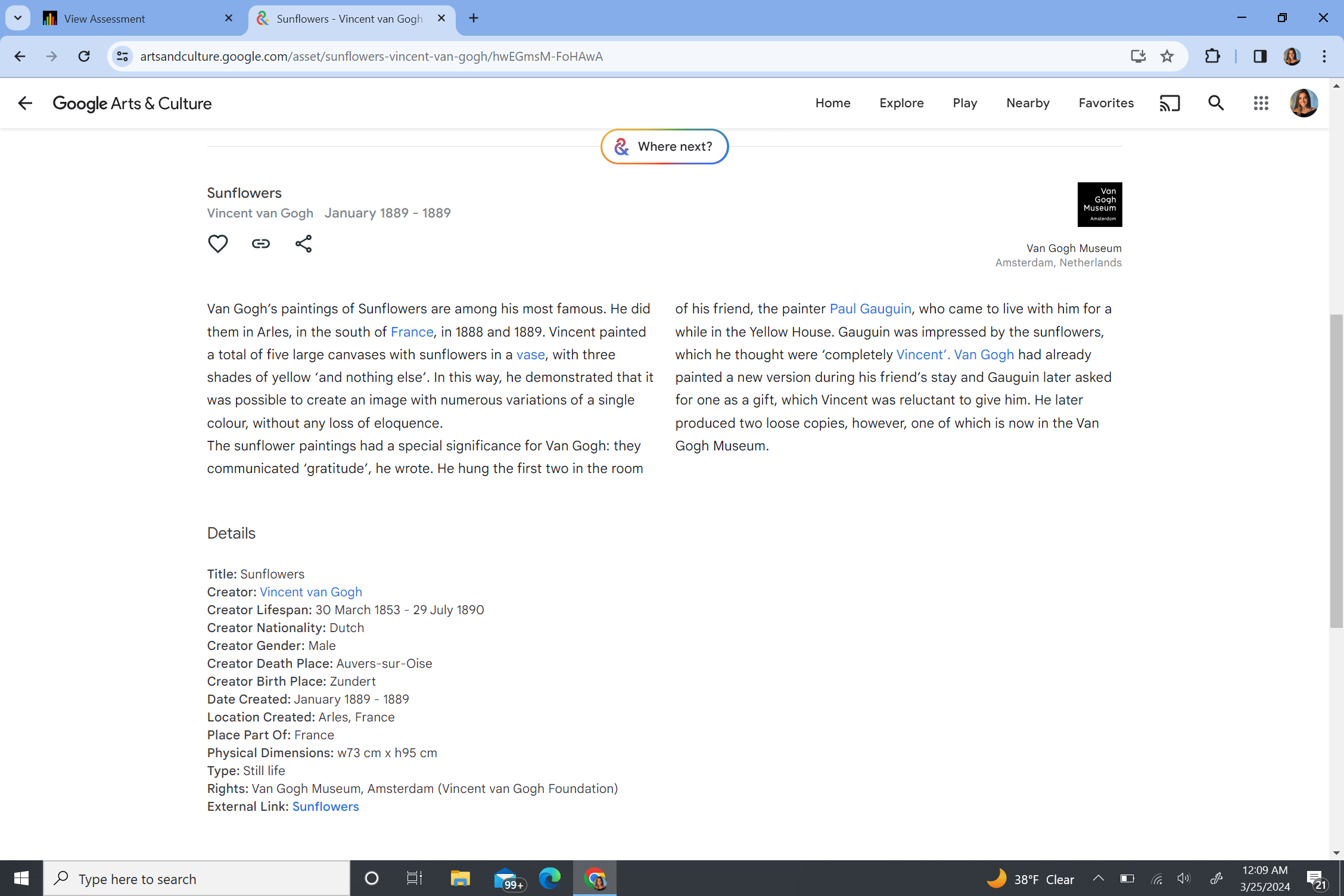
Here is an example of a description you would find under an art piece. Each one is very detailed and provides a lot of information.
I encourage all art, travel and history lovers to go check out the Van Gough Museum. It feels like you are really there.. for free!
https://artsandculture.google.com/partner/van-gogh-museum?hl=en
Communicating using Flipgrid
Flipgrid is the leading video discussion platform around the world. Flipgrid is often used by educators, students and even families. PreK all the way to PhD teachers can use the platform to record and give instruction, share assignments, make class announcements or initiate a discussion. It can also be used for faculty/community meetings or for long distance communication. Through Flipgrid, the audience can post video reponses to add comments or ask questions.
FlipGrid is easy to access and navigate, plus, it only takes a few minuets to get started! FlipGrid is free to use for the facilitator and the audience. This platform allows people to build better connections with the people in their communities. To me, there is a major difference when texting in an online chat compared to having a group discussion through video responses. It is easier to understand material and more engaging when you can see someone’s face, see their expressions and hear the tone of their voice. FlipGrid can be very beneficial to people who have anxiety about speaking or asking questions in front of a group of people. Being behind a screen during group interactions but also being able to hear and see people creates a great balance of community and comfortability.
I used FlipGrid for the first time this semester and it will not be my last! I will definitely use this fun and free discussion platform as a way to communicate in my future classroom!

Global Kids Activity Deck
“Global Kids contains a wealth of fun and creative hands-on activities kids find absolutely thrilling to explore, more than 50 culturally-diverse games, arts, crafts, recipes and festivities plus numerous ways to serve our planet and people around the world through kindness and awareness” – Tillywig Toy & Media Awards
I chose the Global Kids Activity Deck as my tool because I believe that hands on activities are crucial in encouraging a child’s drive to learn. Students at every age level enjoys participating in hands on learning. As a bodily/kinesthetic learner, I have always and will always value hands on work. Hands on activities promote positive interactions with classmates, are a healthy way to release energy and a fun and effective way for students to gain knowledge. Global kids does all of this while incorporating cultural diversity. These activities will educate and acclimate every student about their own culture and the cultures of other people from around the world. These activities spread love, inclusivity and knowledge to the young minds of our future. I would use the Global Kids Activity Deck in my classroom as a fun and interactive way to get students minds, perspectives and hearts to grow. These activities are great for all year round learning, but can be specifically used for heritage projects, language classes and specific lessons on geography or history.
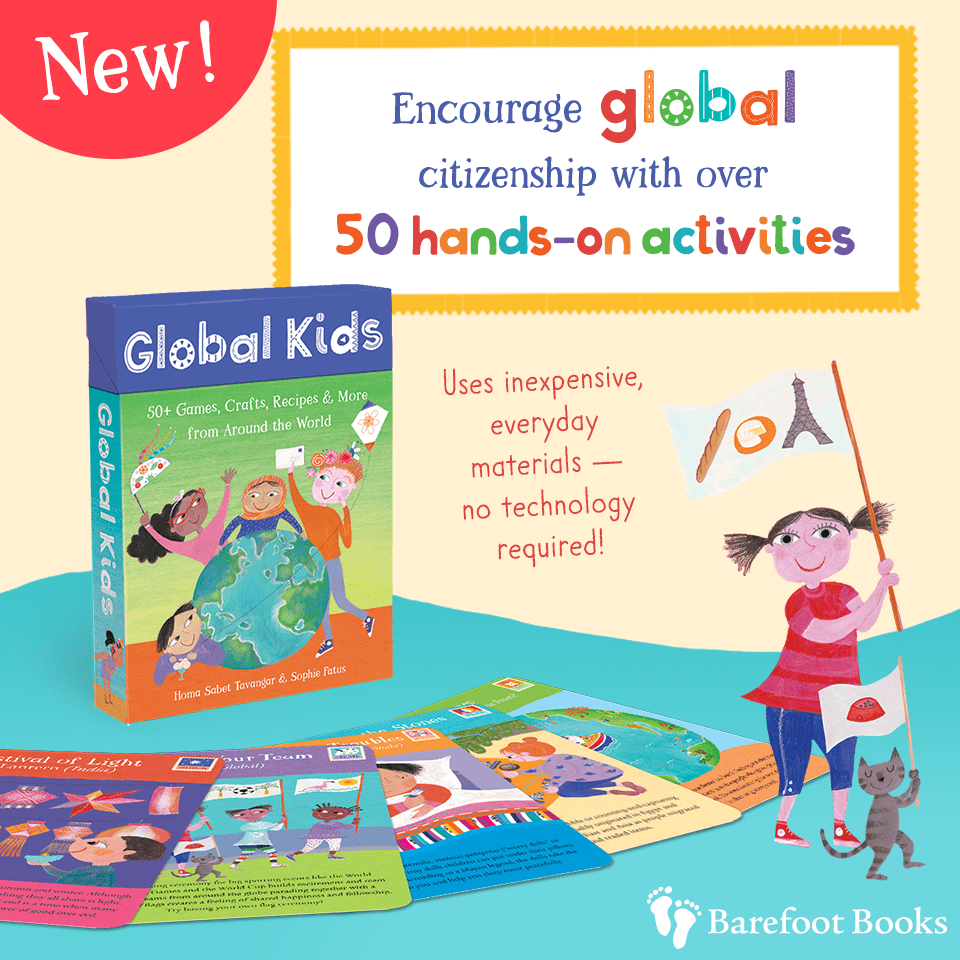
Using Private Chats in Distance Learning Platforms to Meet Individual Needs
Have you ever refrained from raising your hand in class to share your answer due to fear of being incorrect? Have you held back from asking a question in front of your class because you feel like no one else is struggling? We have all been there. Sometimes it can be difficult to reach out for help publicly out of embarrassment or anxiety. In distance learning, most communication is made through a public chat box or discussion board. Some learners may not thrive in the class if this is their only form of communication.
The private chat option allows students to communicate with their educators honestly and without an audience. This individualized support can make a big difference in a students academic success in distance learning. However, I understand that it can be difficult for educators to monitor private chats during a lesson. In this case, paraeducators, or co-hosts in that chat, will be able to monitor these conversations and provide the support that is needed if the head teacher is unavailable at the moment.
This feature limits stress and anxiety for students and promotes a more personal support system for students while distance learning. Zoom, Google Meet, Microsoft Teams, and Adobe Connect are all platforms that allow private chats between a host and individual learner.
Click this link to watch a short video on how to start a private chat on Zoom.

This image represents online distance learning where a private chat box might come in handy for students who feel more comfortable expressing concerns to their teacher directly.
Source: Bugaj, C. (2022). Inclusive learning 365: Edtech Strategies for every day of the Year. Hawker Brownlow Education.
Four Tips For Teaching with Technology
After reading an article about an ISTE certified teacher helping other educators feel comfortable with technology in this book, I was able to gain a new perspective on technology usage in the classroom. I also learned some new tools that myself, and others can benefit from. Laurie Guyon, a sixth grade English teacher, was first introduced to the new iPads she would be using in her classroom two weeks before the start of school. Like most of us would have been, Guyon was intimidated to say the least. However, After experimenting with her new device she noticed a huge increase of student engagement. She recognized that her class thrived with this new tool and quickly wanted to teach other educators how to feel comfortable with technology usage in their classrooms. At the start of the pandemic, Guyon hosted virtual office hours to give teachers a place they could ask questions, get ideas and practice their technology skills. Think about it, hardly anyone was learning virtually so this was a drastic change for school communities everywhere. Guyon’s support helped so many teachers get comfortable with these changes , therefore helping students learn more effectively during the pandemic. Now, years later, virtual and online learning is more prevalent than ever. As a student, educator or someone who is just interested in teaching with technology, here are four tips recommended by Laurie Guyon: Learn alongside your students, think in mini lessons, make connections and allow time to explore. First, learning alongside your students is crucial to the success of your students. Becoming a co-learner empowers students to take initiative in their own learning experiences. Second, making mini lessons is much more effective than delivering a long lecture. Students learn more when they get to practice new material on their own. Third, with having a background with technology, students will be able to make deeper connections in other aspects of their academics. Guyon tells her class to think of editing essays like they are coding. Lastly, allow your students to explore and learn new things on their own. Laurie Guyon does not give her students much direction aside from how to login or sign up for something new. After they have looked around and explored the app themselves, then she will create a class lesson from there.
I understand that the idea of teaching yourself and your students how to navigate new technology in the classroom can sound alarming, but with these four helpful tips it can be a breeze! In today’s world, tech is our future and so are the young minds in our schools!
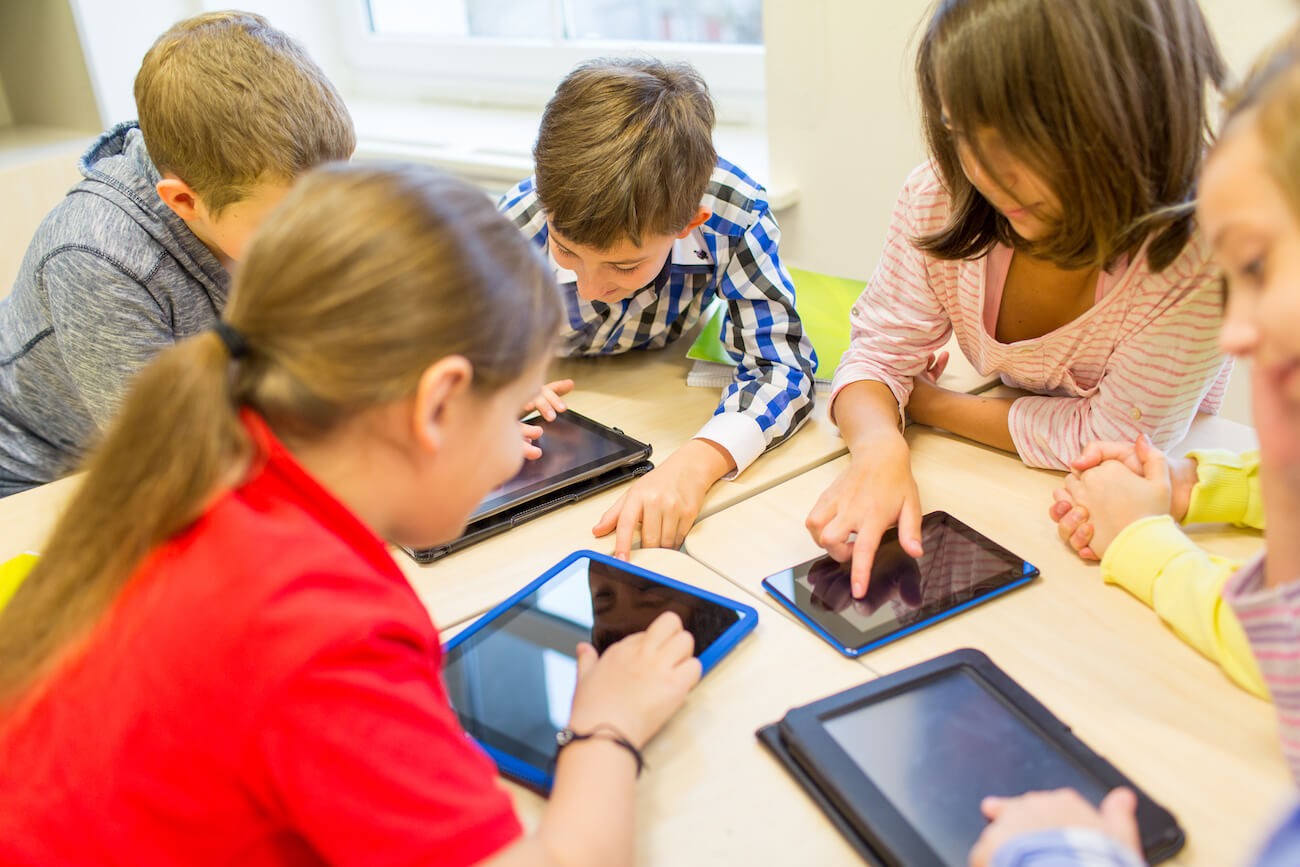
This image shows elementary school students using technology as a tool to learn in their classroom.